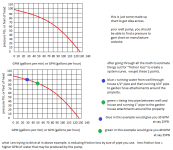aczlan
Good Morning
- Joined
- Mar 7, 2008
- Messages
- 18,078
- Tractor
- Kubota L3830GST, B7500HST, BX2660. Formerly: Case 480F LL, David Brown 880UE
As for the adapters, Grainger lists a 10 pack of connectors that go from a 1" male barb to a 3/4" male NPT for $13. Those should work as long as the pressure stays below 150PSI and the temp between -80F and 200F.
See: Adapter, 3/4 In Thread Size, PK 10 - Polyethylene Tube Fittings - Fittings - 4EMW3 : Grainger Industrial Supply
Aaron Z
See: Adapter, 3/4 In Thread Size, PK 10 - Polyethylene Tube Fittings - Fittings - 4EMW3 : Grainger Industrial Supply
Aaron Z
